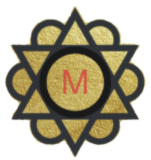
Tarot cards have captivated the human imagination for centuries, serving as a tool for divination, self-reflection, and spiritual exploration. At their core, tarot decks typically consist of 78 cards divided into two main categories: the Major Arcana and the Minor Arcana. The Major Arcana comprises 22 cards that represent significant life events, spiritual lessons, and archetypal themes.
Each card in this section, from The Fool to The World, carries profound symbolism and meaning, often reflecting pivotal moments in one’s life journey. The Minor Arcana, on the other hand, consists of 56 cards divided into four suits: Cups, Pentacles, Swords, and Wands. Each suit corresponds to different aspects of human experience—emotions, material concerns, intellect, and creativity, respectively.
Understanding the structure of tarot cards is essential for anyone looking to delve into their mysteries.
For instance, The Tower card often signifies upheaval or sudden change, while The Star represents hope and renewal.
The meanings of these cards can shift dramatically based on their position in a spread and the surrounding cards. This fluidity allows for a dynamic interaction between the reader and the cards, making each reading a unique experience that can provide insight into personal challenges or future possibilities.
Key Takeaways
- Tarot cards are a tool for self-reflection and insight, often used for guidance and personal growth.
- When choosing a tarot deck, consider the imagery, symbolism, and personal connection you feel with the cards.
- Setting intentions for your tarot practice can help you focus and align with the energy you want to bring into your readings.
- Developing a personal connection with your cards involves spending time with them, meditating on their meanings, and understanding their unique energy.
- Tarot spreads can be used for self-reflection and insight, providing guidance and clarity on specific areas of your life.
- Integrating tarot into your daily self-care routine can help you cultivate mindfulness, self-awareness, and a deeper connection with your intuition.
Choosing the Right Tarot Deck for You
Visual Appeal and Artwork
Some individuals are drawn to decks with vibrant colors and modern illustrations, while others may prefer classic imagery steeped in tradition. The visual appeal of a deck can enhance your connection to the cards and make your readings more intuitive.
Reflecting on Your Intentions
Are you seeking guidance for personal growth, exploring spiritual questions, or simply enjoying the art of storytelling through the cards? Different decks may cater to different purposes. For example, if you are interested in psychological insights, you might gravitate toward decks that emphasize Jungian archetypes or personal development themes.
Finding the Right Deck
Conversely, if you are drawn to mythology or folklore, a deck that incorporates these elements may resonate more deeply with you. Ultimately, the right tarot deck should feel like an extension of yourself—an instrument that facilitates your exploration of the self and the universe.
Setting Intentions for Your Tarot Practice

Setting intentions is a vital step in establishing a meaningful tarot practice. Intentions serve as guiding principles that shape your interactions with the cards and influence the insights you gain from readings. Before embarking on a tarot session, take a moment to reflect on what you hope to achieve.
This could range from seeking clarity on a specific situation to fostering a deeper understanding of your emotional landscape. By articulating your intentions clearly—whether through journaling or meditation—you create a focused mindset that enhances your receptivity to the messages conveyed by the cards. Moreover, intentions can evolve over time as you deepen your relationship with tarot.
Initially, you might approach the cards with questions about immediate concerns or challenges. As you become more familiar with their language and symbolism, your intentions may shift toward broader themes such as personal growth or spiritual exploration. This evolution reflects not only your journey with tarot but also your personal development.
By regularly revisiting and refining your intentions, you cultivate a practice that remains relevant and enriching throughout different phases of your life.
Developing a Personal Connection with Your Cards
Building a personal connection with your tarot cards is essential for fostering intuition and enhancing your readings. This relationship can be nurtured through various practices that encourage familiarity and understanding of each card’s unique energy. One effective method is to spend time with each card individually, allowing yourself to explore its imagery and symbolism without the pressure of immediate interpretation.
Consider keeping a tarot journal where you can document your impressions, feelings, and any insights that arise as you engage with each card. Over time, this practice will deepen your understanding and create a reservoir of personal associations that enrich your readings. Another way to strengthen your bond with your tarot deck is through ritualistic practices.
Some individuals choose to cleanse their decks regularly using methods such as smoke from sage or incense, while others may prefer to charge their cards under moonlight or sunlight.
Additionally, consider incorporating your deck into daily routines—whether through morning draws for guidance or evening reflections on the day’s events.
By integrating tarot into your life in meaningful ways, you cultivate a sense of companionship with your cards that enhances both your readings and personal insights.
Using Tarot Spreads for Self-Reflection and Insight
Tarot spreads are structured layouts that facilitate readings by providing context and organization to the cards drawn. Each spread serves a different purpose and can be tailored to address specific questions or themes in your life. For instance, a three-card spread might be used to explore past, present, and future influences surrounding a particular situation, while a Celtic Cross spread offers a more comprehensive view of challenges and opportunities by examining various aspects of one’s life journey.
Understanding how to utilize different spreads effectively can significantly enhance your self-reflection process. When engaging with tarot spreads, it’s essential to approach them with an open mind and heart. Allow yourself to interpret the cards intuitively rather than relying solely on traditional meanings.
For example, if you draw The Empress in a position representing obstacles, consider how her themes of abundance and nurturing might manifest as challenges in your life—perhaps indicating overcommitment or difficulty in setting boundaries. This nuanced interpretation encourages deeper self-exploration and insight into your circumstances. Additionally, after completing a reading, take time to reflect on how the messages resonate with your current experiences or emotions; this practice fosters ongoing growth and understanding.
Integrating Tarot into Your Daily Self-Care Routine

Incorporating tarot into your daily self-care routine can transform it into a powerful tool for mindfulness and personal growth. By dedicating time each day to engage with your cards—whether through daily draws or reflective journaling—you create space for introspection and self-discovery amidst life’s busyness. A simple practice might involve drawing one card each morning as a focal point for the day ahead; this card can serve as a prompt for reflection or intention-setting throughout your daily activities.
Moreover, consider pairing tarot with other self-care practices such as meditation or affirmations. For instance, after drawing a card in the morning, take a few moments to meditate on its meaning and how it relates to your current emotional state or goals. You might also create affirmations based on the card’s themes—if you draw The Chariot, for example, affirming your determination and focus can help channel its energy into actionable steps throughout your day.
By weaving tarot into various aspects of self-care—be it through creative expression like art or writing—you cultivate a holistic approach to well-being that nurtures both mind and spirit. In conclusion, tarot offers an expansive landscape for exploration and self-discovery when approached with intention and openness. By understanding its basics, choosing the right deck, setting clear intentions, developing personal connections with the cards, utilizing spreads effectively, and integrating tarot into daily self-care routines, individuals can unlock profound insights that enhance their lives in meaningful ways.
Each card becomes not just an image but a mirror reflecting one’s inner world—a guide illuminating paths toward growth and understanding in an ever-evolving journey of life.
If you are interested in delving deeper into the mystical world of tarot cards, you may also want to explore the article Understanding the Tarot Card Justice. This article provides insights into the symbolism and meaning behind the Justice card in tarot readings, offering a deeper understanding of how this card can be used for personal growth and self-reflection. Additionally, if you are intrigued by the spiritual significance of numbers, you may enjoy reading The Mystical Meaning of Number 7, which explores the symbolism and significance of the number 7 in various spiritual traditions. For those interested in numerology, Understanding Numerology Charts: Insights into Personality Strengths and Life Path offers a comprehensive guide to using numerology to gain insights into your personality traits and life path.
FAQs
What are tarot cards?
Tarot cards are a deck of 78 cards that are used for divination, meditation, and personal growth. Each card has its own imagery and symbolism that can be interpreted in various ways.
How can tarot cards be used for personal growth?
Tarot cards can be used for personal growth by providing insight into one’s thoughts, emotions, and behaviors. They can help individuals gain clarity, self-awareness, and guidance in making decisions.
How do you use tarot cards for personal growth?
To use tarot cards for personal growth, one can start by setting an intention or asking a specific question. Then, the cards are shuffled and drawn, and their meanings are interpreted in relation to the question or intention.
Can anyone use tarot cards for personal growth?
Yes, anyone can use tarot cards for personal growth. There is no specific requirement or belief system needed to use tarot cards for self-reflection and personal development.
Are tarot cards a form of fortune-telling?
While tarot cards are often associated with fortune-telling, they can also be used for introspection and personal development. The interpretation of the cards is not necessarily predictive, but rather can provide insight and guidance.






